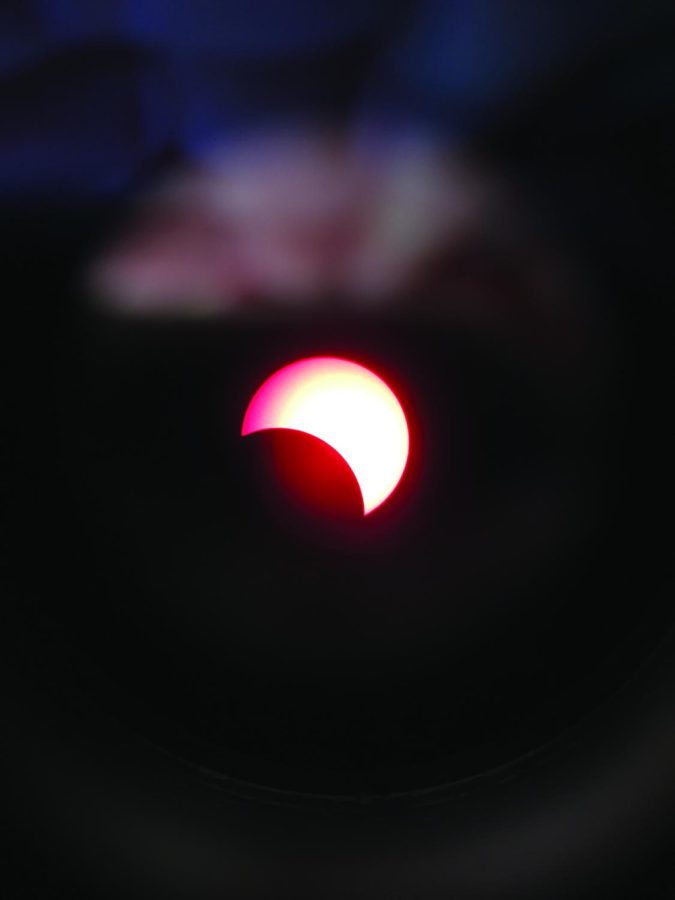This Month to Feature a Rare Hybrid Solar Eclipse
photo courtesy of Scott Patterson
The Sun partially covered by the Moon as seen through Patterson’s solar telescope.
April 14, 2023
A total hybrid solar eclipse is set to be visible to large parts of the planet, including San Diego, on April 20, an event many in the UC High community greatly look forward to.
According to an eclipse tracking website, the regions that will see a partial eclipse on April 20 include: South/East Asia, Australia, the Pacific, the Indian Ocean, and Antarctica. There will also be a live stream of the eclipse available for those who are unable to travel (timeanddate.com).
According to a space information website, “In a rare, cosmic alignment of the Earth, moon and sun, this event will be a hybrid affair, the first such solar eclipse since 2013 and the last one until 2031” (space.com). According to the National Aeronautics and Space Administration (NASA), a hybrid eclipse occurs when the moon’s shadow moves across the curved surface of the Earth, shifting the eclipse between annular and total (solarsystem.nasa.gov).
UC High’s Astronomy club will also have solar viewing parties at lunch whenever the sun is out.
Physics Teacher and Astronomy Club Advisor Scott Patterson said, “Solar eclipses happen when the shadow of the Moon falls on the Earth. This is only possible when the Moon is between the Sun and the Earth, but because the shadow is quite small, solar eclipses are pretty rare.”
Patterson added, “When you are standing in that shadow, it is called ‘totality’. The sky gets dark enough to see stars and planets, the temperature drops by at least ten degrees, and animals react as if night has suddenly fallen. There is even a 360-degree ‘sunset’ of colors on the horizon all around you. The shadow races across the Earth at over 1000 miles per hour, so the spectacle of totality usually only lasts for a couple of minutes.”
Regarding eclipse viewing safety precautions, Patterson said, “Everyone will need a pair of Eclipse Glasses that block out all light except for a tiny bit of sunlight, making the partial phases of the eclipse viewable. A quality solar filter on a telescope will make the view even better.”
“Only after totality has begun will it be safe to remove the eclipse glasses and enjoy one of the most spectacular sights you can witness anywhere on Earth. Be sure to look for the ‘Diamond Ring’ effect just before and after totality, where the Moon looks like a ring with a huge diamond sparkling as the Sun disappears. Make sure you get the glasses back on when totality ends a few minutes later,” said Patterson.
A second eclipse will reportedly occur on April 30 and “…this partial solar eclipse is visible from southern South America, parts of Antarctica, and over the Pacific and Atlantic Oceans,” according to a space information website (timeanddate.com).
Next year, “On April 8, 2024, a total solar eclipse will cross North America, passing over Mexico, the United States, and Canada,” says NASA. It would be the last one of its kind for a while. “The next total solar eclipse that can be seen from the contiguous United States will be on August 23, 2044” (solarsystem.nasa.gov).


